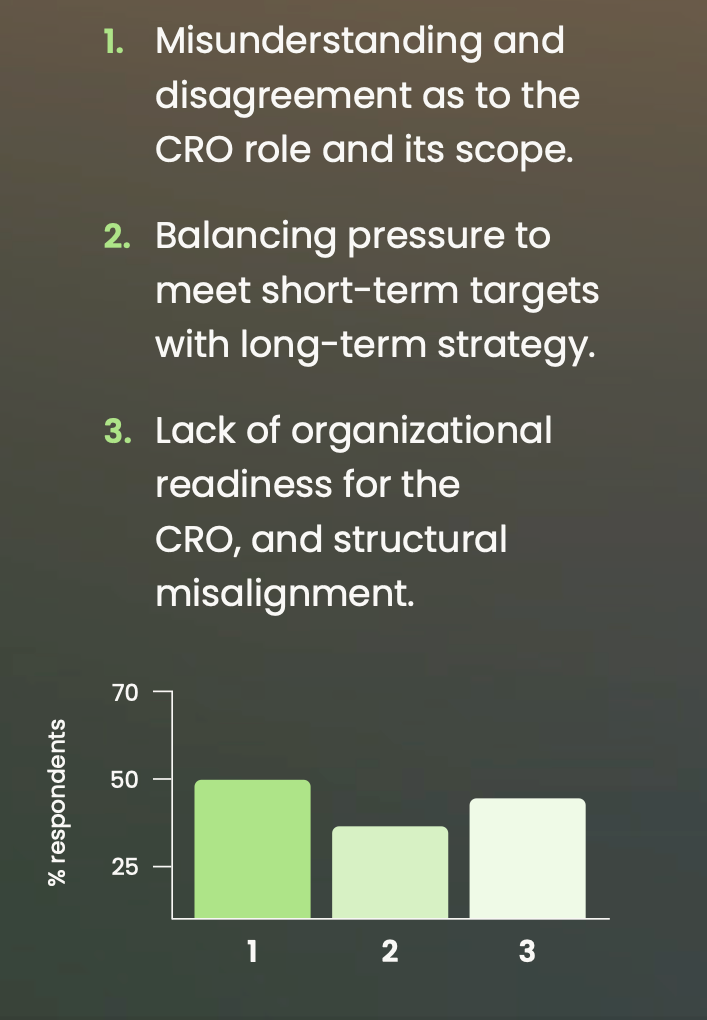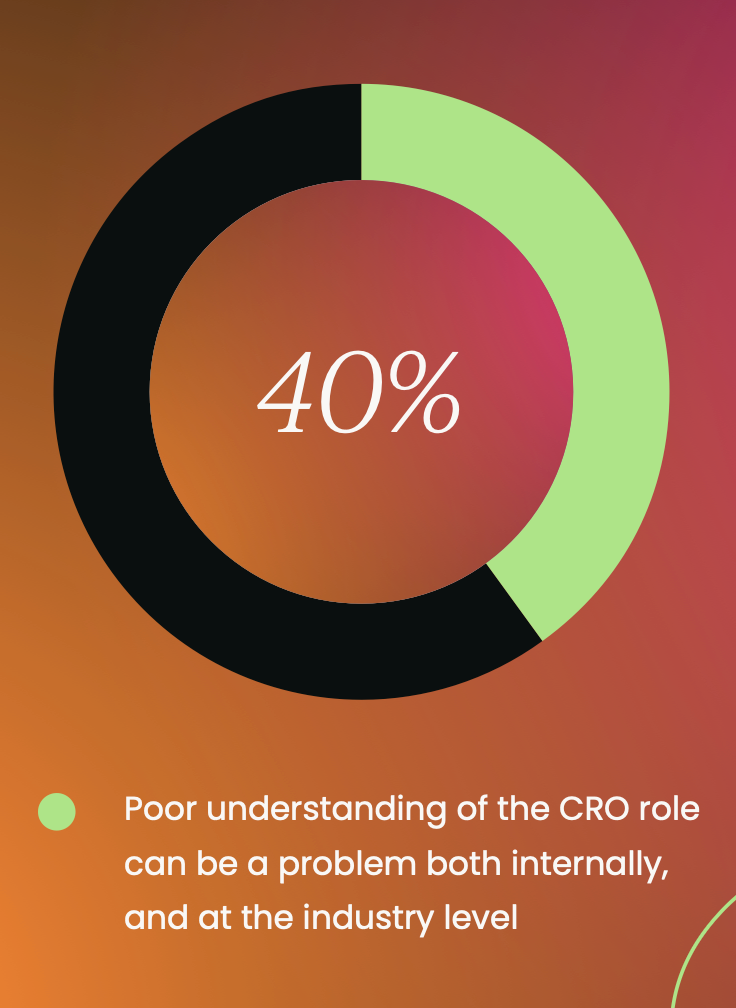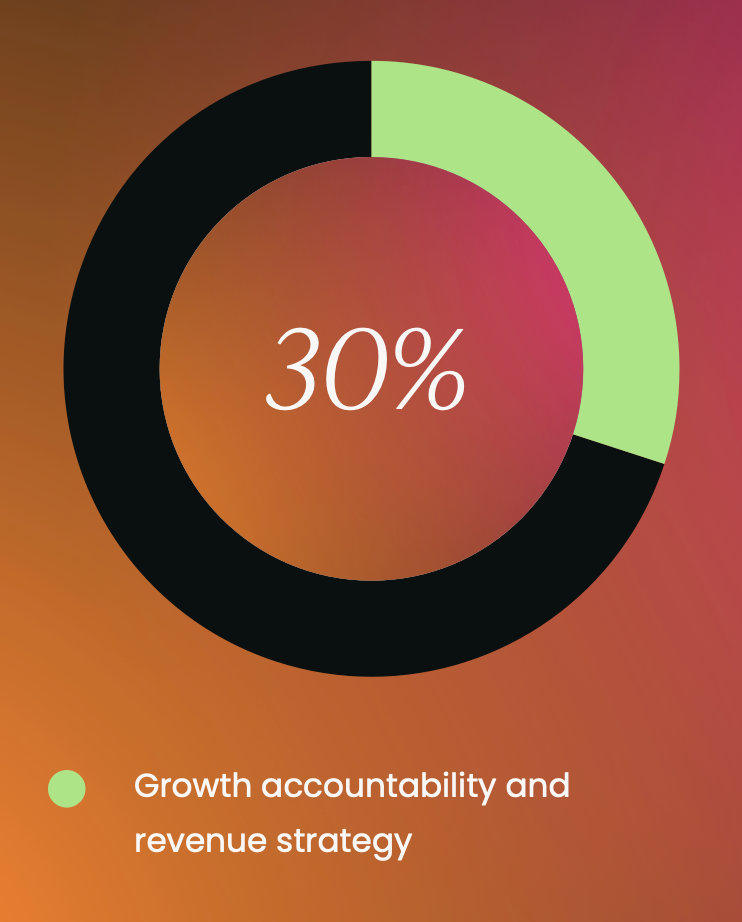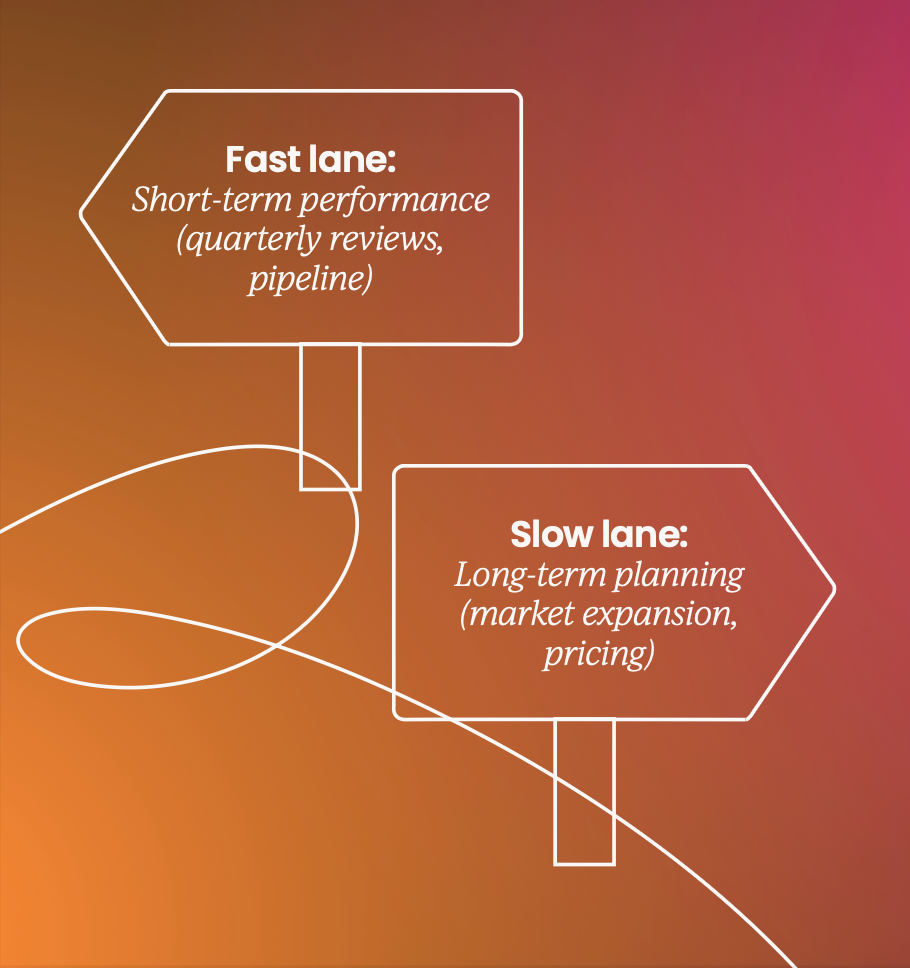In 2025, the CRO role is as strategically vital as it is operationally vulnerable. It’s high stakes, but often poorly understood.
CROs are being asked to unify fragmented teams, build scalable systems, hit near-term goals, and lead transformation across functions that don’t report to them.
But they’re set up to fail. How? Through misalignment, lack of clarity on the role’s scope, and cultural resistance.
In our research for the CRO Insights Report, we spoke to 30+ chief revenue officers from various industries to uncover the challenges CROs are facing right now.
What we found was startling.

Three challenges cropped up again and again:
- Misunderstanding of the CRO role
- Balancing short-term targets with long-term growth
- Lack of organizational readiness
Let’s explore each in turn.

1 - Misunderstanding of the CRO role
A full half of the CROs we spoke to cite role ambiguity, lack of scope clarity, or being “miscast as a glorified VP of Sales”, as a key challenge. (It seems this is especially common in less mature companies.)
Where does this misunderstanding come from?
Our research suggests it stems from a lack of history with the role. Some industries have used, and benefitted from, a figurehead revenue leader for a long time. SaaS and high-growth tech spring to mind. In many other industries, however, things are different.
Damian Saunders, CRO at RipeMetrics, brings up the challenge of being “a CRO-with-a-small-C”. A scenario where you’re left with “all the accountability [but] none of the control.” In his experience, “this leads to friction, high-stress levels, and is the reason so many CROs burn out so quickly.”
The correct view of the CRO
What exactly should the CRO role entail, then?
Three themes emerged:
1 - Ownership of revenue across the go-to-market function
Where the CRO is strongest, chief revenue officers are understood as the owners of the entire revenue cycle. In fact, 70% of all the CROs we spoke to actively describe the ideal CRO in this way.

That means responsibility for teams including:
- Sales
- Marketing
- Customer Success
- RevOps
- Partnerships
In such organizations, the CRO is seen as an orchestrator of alignment between revenue-generating teams.
“We believe a Chief Revenue Officer is responsible for all aspects of revenue spanning marketing, sales, and customer success, to have holistic and integrated approaches to three different revenue streams: acquisition, retention, and expansion.” - Mark Osborne, Fractional CRO
2 - Not simply a sales leader
The second theme we discovered?
A poor understanding of the CRO role can manifest internally, or at the industry-level. This misunderstanding most often manifests as the view of the CRO as a “mere” sales leader.

We don’t say “mere” to detract from sales leadership. But revenue leaders who want maximum impact must manage more than sales. More affects the revenue cycle, after all, than what goes on before a deal is closed.
Retention, for example, can (and should) be a part of revenue strategy. Without authority over Customer Success, and insight into the data that team has at its fingertips, the CRO is unable to even access a crucial revenue lever.
Marketing, too, impacts the revenue cycle. The better your marketing, the easier it is to close deals when they come along. The right data-led approach can transform the view of marketing from cost-center into a revenue driver. This is something a CRO has the power to do… if marketing falls under their purview.
3 - Growth accountability and revenue strategy
The true CRO, say our experts, is accountable for growth and revenue strategy. 30% of the CROs we spoke to called attention to the part they play in being directly accountable for value creation and growth in their org.

“At Protos, we define the Chief Revenue Officer role as the strategic, visionary leader responsible for driving enterprise value creation and business growth…” - Peter R. Platen, CRO, Protos Security
For CROs to succeed, they must first know what is expected of them. When this differs from company-to-company, it becomes difficult both (i) for companies to know what kind of CRO they’re hiring, and (ii) for CRO applicants to know what they’re in for during the job application process.
This leads to revenue leaders building sets of skills that their next employer might think redundant, or be unable to make use of. Worse still are the cases where organizations hold their CROs accountable for success in areas like revenue growth, without giving them the authority or the resources they need to succeed.

2 - Balancing short-term targets with long-term growth
One third of the CROs we spoke to feel intense pressure to deliver results now, while being expected to build scalable systems, with very little slack.
Being able to develop a long-term vision while still facing short-term targets [is a great challenge].” - Ivo Mertens, CRO, iBanFirst
Whichever you think is more important, it’s clear that CROs are expected to deliver on both.
We asked our CROs how they strike a balance between short-term targets and long-term goals. Those who are most effective:
1 - Create dual-operating rhythms
53% of CROs emphasize managing two distinct tracks in their work. One is focused on delivering near-term results, while the other ensures progress on long-term strategic bets.
Naomi Brezi, CRO of Ruffalo Noel Levitz, described focusing on quarterly performance on the one hand, and “longer-horizon planning” on the other.
In practice, this involves “weekly pipeline and forecast reviews”, and in parallel, pushing through initiatives “like pricing strategy, market expansion, and product-channel fit” with her leadership team.
2 - Plan strategically while segmenting workstreams
40% of those we spoke to, though, take a more granular approach. They explicitly segment initiatives, pipeline, or investment by more timeframes than simply short- and long-term. Monthly, quarterly, yearly, and multi-year timeframes were all mentioned.
Peter R. Platen, CRO of Protos Security, builds a “momentum map” that he uses alongside both five- and ten-year roadmaps, while Subir Dutt, CSO of Xometry, operates “with strategies and tactics to optimize across three time horizons: current month, next 6 months, next 18 months.”

3 - Strong partnership with CEO, CFO, and board
Securing executive alignment, particularly around trade-offs between short- and long-term focus, and resource allocation, is considered critical to success by 37% of the CROs we spoke to.
Without buy-in from these players, CROs will struggle to defend investments that, though they may not pay off this quarter, will define the next chapter of growth for the company.
A strong partnership also allows CROs to speak candidly about the inherent trade-offs in splitting attention between long- and short-term targets.
“There is always a trade-off in any strategy. The balance of doing it successfully is that the business understands and buys into the trade-offs that are being made.
[For example, a] big client with specific requirements means we lose control of the product roadmap. A strong focus on product vision rather than listening to [the] client needs means that we risk missing near-term revenue goals.
Where possible, the best way I've found to help the business understand these sacrifices is [by] putting a revenue number against the scenarios.” - Nick Buxton, Founder at Stealth Mode
3 - Lack of organizational readiness
43% of CROs we spoke to cite a lack of organizational readiness and/or structural misalignment as a great challenge.
Coined by Warren Zenna, Founder of the CRO Collective, “CRO Readiness is… about organizational mindset, operational maturity, and leadership alignment.”
Organizations that hire a CRO too early risk misalignment, underperformance, and a revolving door at the top of revenue leadership.
We asked CROs for their view on the prerequisites an organization should hit before looking to hire a CRO:
1 - Product-market fit and a repeatable sales motion
53% of CROs we spoke to agree that product-market fit (PMF) is a prerequisite. The company should already be selling consistently, with repeatable and scalable revenue processes in place.
If these aren’t in place, CROs are forced to create them from scratch before they can begin on the work of scaling, and reaching for revenue targets.
If CEOs expect quarter-on-quarter growth from their revenue leaders, while those leaders are still trying to build the systems necessary for such growth, CROs will struggle to impress, no matter how much they accomplish.
2 - Executive alignment on revenue strategy
40% of the CROs we spoke to say that strong alignment among the CEO, board, and executive team on the role and expectations of the CRO is critical.
Beyond this, alignment on the revenue strategy itself matters.
If leaders agree that the CRO is coming in to scale revenue by working across all go-to-market functions, they’re setting them up for success. But even with such agreement, a CRO will struggle to have an impact if other members of the executive team block their strategy.
3 - Organizational scale, cross-functional complexity, and infrastructure maturity
37% of CROs suggest that the role is best suited to scale-stage companies where complexity across GTM functions (sales, marketing, CS) requires orchestration.
Readiness is not so much about company size, as it is about operational maturity (systems, GTM structure, and leadership alignment). CROs need a baseline of data, reporting, and tech infrastructure to make strategic decisions. Otherwise, they’ll get stuck building the basics.
How CROs can succeed
CROs must enter interview processes with their eyes wide open, aware of the risks involved with joining a business before it’s mature enough to warrant the role, or where expectations around the role and its responsibilities are misaligned. CROs must filter out such organizations while they’re applying for work.
Once hired, CROs should work to reinforce the role of CRO as leader of the entire revenue function. Most crucially, they must develop strong relationships. Both laterally, with the rest of executive leadership and the company board, and downwards.
Keeping the revenue engine humming, and all its teams in sync, is the CRO’s signature role. In the next article in this series, we’ll examine how our experts achieve alignment at every level to succeed.



 7 min read
7 min read
 Follow us on LinkedIn
Follow us on LinkedIn



